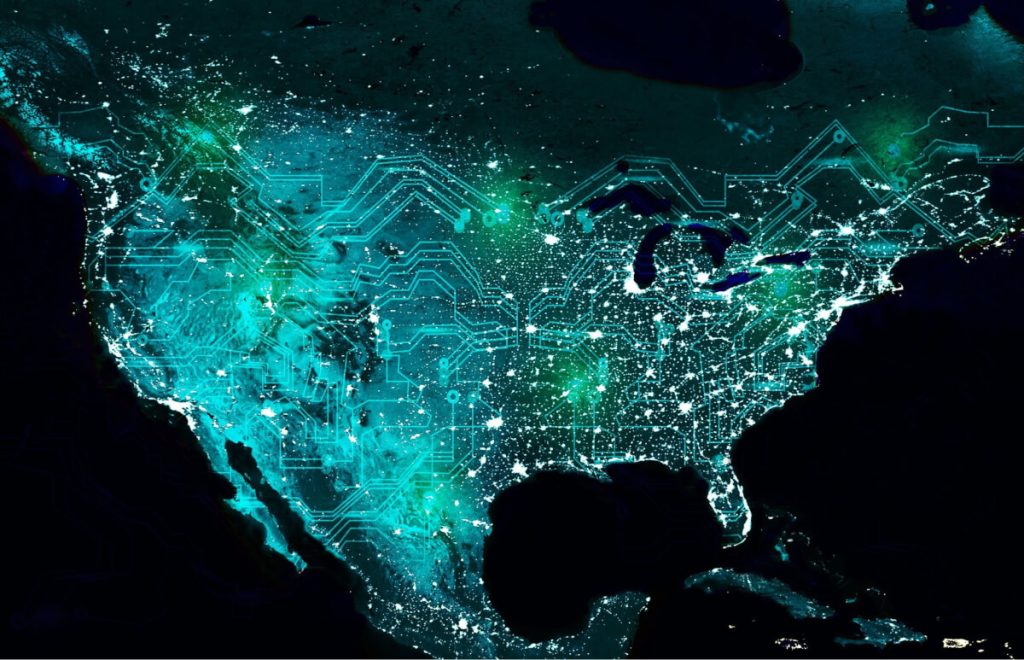

(Image by Zenobillis on Shutterstock)
FORT WORTH, Texas — The dazzling plays and spectacular shows of the Super Bowl come with an overlooked environmental cost: massive electricity consumption. A new analysis reveals that Americans consumed an estimated 36.39 million kilowatt-hours (kWh) of electrical energy watching the 2024 Super Bowl on television — equivalent to powering nearly 2,000 homes for an entire year.
The study, conducted by Texas-based energy provider Payless Power, sheds light on the substantial energy footprint of America’s biggest sporting event. When factoring in all 58 Super Bowls to date, the cumulative energy usage is even more staggering: an estimated 1.455 billion kWh. That’s enough electricity to power over 76,000 homes for a year.
The energy consumption behind this iconic event reveals the collective impact of millions of Americans tuning in simultaneously. The 2024 Super Bowl’s television energy consumption alone equals the annual energy consumption of 1,923 homes, the energy needed to drive an average gas-powered car 36,467,942 miles, or the power required to charge more than 1.15 billion smartphones. This massive power draw demonstrates how individual actions, when multiplied across a nation, create significant environmental impacts.


Looking at the historical data presents an even more dramatic picture. As mentioned, the total energy consumed watching all Super Bowls (1.455 billion kWh) translates to the annual energy usage of 76,896 homes. This amount of electricity consumption generates carbon emissions equivalent to burning 64,429,265 gallons of gasoline or provides enough power to operate 505,678 electric vehicles for one year.
The analysis also revealed interesting patterns in team-specific energy consumption based on their Super Bowl appearances. The New England Patriots lead all teams in terms of collective viewer energy usage, with Americans having consumed an estimated 320.26 million kWh of electricity watching their Super Bowl appearances. Following the Patriots in terms of total viewer energy consumption are the San Francisco 49ers (219.93 million kWh), Denver Broncos (211.93 million kWh), Pittsburgh Steelers (193.84 million kWh), and Dallas Cowboys (173.21 million kWh).
When examining historical Nielsen ratings, the study found that Super Bowls featuring the Chicago Bears achieved the highest average rating at 45.45. Among teams with at least five Super Bowl appearances, the Miami Dolphins (44.7) and Dallas Cowboys (44.66) maintained the highest average Nielsen ratings, indicating consistently high viewer engagement — and consequently, higher energy consumption — during their appearances. The ratings provide insight into how team popularity and market size influence the overall energy footprint of Super Bowl broadcasts.
Most people probably aren’t thinking about the hidden environmental impact of major sporting events through collective energy consumption. While individual television usage might seem minimal, the synchronized viewing habits of millions of Americans create a significant power demand. This raises important questions about the environmental footprint of mass media events and potential strategies for mitigation as we continue to gather as a nation to watch major sporting events.
Methodology
Payless Power leveraged data from SportsMediaWatch to analyze Super Bowl viewership patterns across all 58 games. The study calculated electrical energy consumption using an estimated rate of 0.07875 kWh per hour for average TV viewing. This baseline consumption rate was applied to viewership numbers to determine total energy usage by year and team.
The analysis incorporated Nielsen ratings to understand viewing patterns and their relationship to energy consumption. The calculations considered both cumulative historical impact and individual game energy usage, with particular attention to team-specific viewing patterns and their associated energy footprint.








